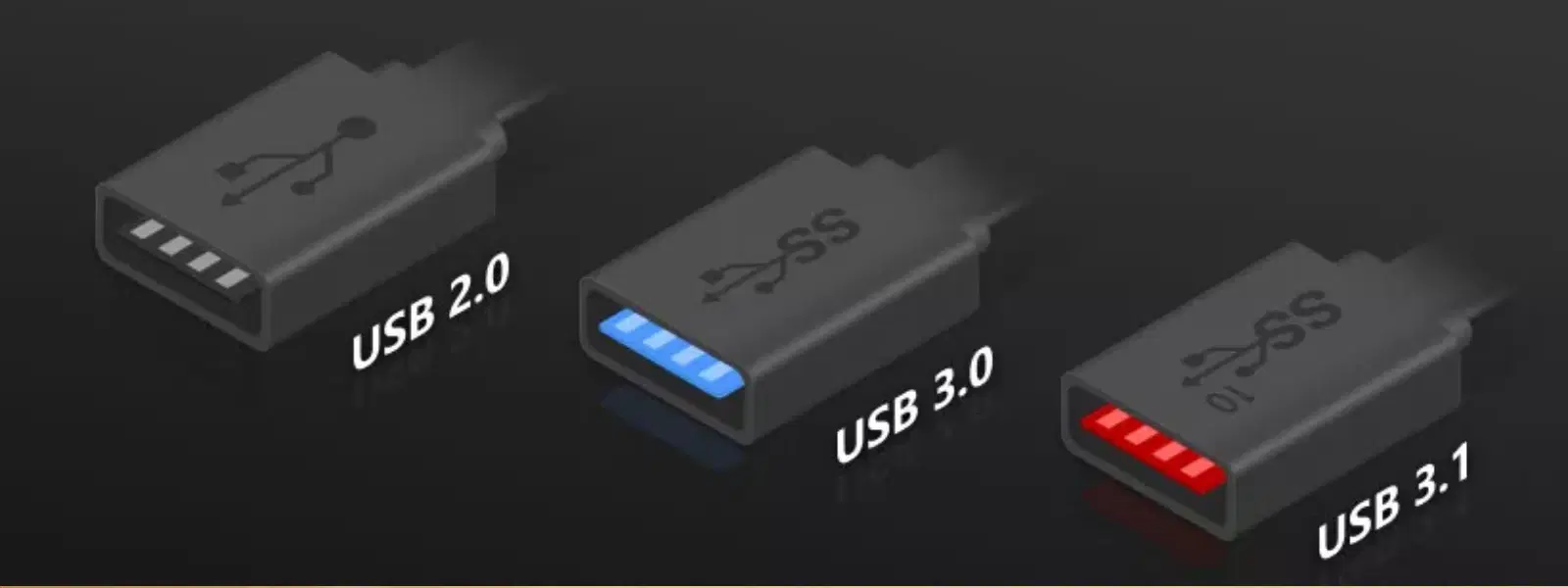
Consumer Electronics
•04 min read
Have you ever wondered if your older USB 2.0 device will work with the newer USB 3.0 ports on your computer? In our technology-focused era, getting clarity on USB compatibility can help you make better decisions and enjoy your devices to the fullest. This guide explains clearly how USB 2.0 and 3.0 work together, what differences to expect, and how you can ensure your gadgets perform optimally.
USB 2.0 and USB 3.0 are two commonly used versions of the Universal Serial Bus standard. They have long been favoured for their ease of connectivity and reliability in data transfer and device charging. USB 2.0 handles everyday tasks such as connecting keyboards and mice, while USB 3.0 offers significantly faster speeds for transferring larger files.
When we say will usb 2.0 work with 3.0 setups, the answer is yes, but with limitations. USB 2.0 supports speeds up to 480 Mbps while USB 3.0 can reach speeds up to 5 Gbps because of its additional data lanes. The power output is another area of difference; USB 2.0 provides approximately 2.5W and USB 3.0 offers about 4.5W. Often, you can identify USB 3.0 ports by their blue-coloured connectors, making it easier to distinguish them from older versions.
Rest assured, if you plug a USB 2.0 device into a USB 3.0 port, it will function. However, its performance, whether in data transfer or charging, will remain limited to USB 2.0 standards. Conversely, a USB 3.0 device might not operate at full potential if when connected to a USB 2.0 port. Understanding this compatibility envelope makes it easier to plan your tech upgrades.
USB controllers facilitate the smooth operation between different USB versions. This setup allows devices and ports to negotiate and operate at the mutually supported speeds. In practical use, you may find that many everyday tasks rely on this backward compatibility, while high-demand applications, like transferring large files or using external hard drives, benefit more from the boost offered by USB 3.0.
Imagine transferring a 1GB file: with USB 2.0 you might experience a noticeable delay whereas USB 3.0 completes the task much faster. This speed disparity stems from USB 3.0’s design, which includes extra channels for data transfer. This feature makes significant differences in real-life tasks, particularly for tech enthusiasts who deal with large media files.
Everyday devices like keyboards, mice, or simple printers work well with USB 2.0. On the other hand, activities like HD video streaming, working with external hard drives, and using advanced gadgets clearly benefit from the enhanced speed and power of USB 3.0. This comparison helps set expectations based on your unique needs, whether for home or office setups.
Learning to distinguish between USB 2.0 and USB 3.0 ports on your device is simpler than you might think. Look at the connectors: often a blue hue signals a USB 3.0 port. Additionally, be aware of the connector types such as Type-A, Type-B, Micro, and Type-C, each serving distinct roles in device connectivity. These small details can save you time and offer peace of mind when connecting your devices.
If you encounter a scenario where a USB 3.0 device isn’t performing as expected when inserted into a USB 2.0 port, check that all drivers are up-to-date and that the device receives sufficient power. In many cases, ensuring optimal performance involves using ports that match the device’s requirements. This approach aligns with the practical advice we share on Tata Neu, which champions smart shopping through seamless tech experiences.
For those planning a tech refresh, upgrading ports—from USB 2.0 to USB 3.0—could be well worth your investment. Desktop users can often find PCI-E cards designed to add USB 3.0 functionality, making it a straightforward enhancement. This upgrade is especially advantageous for heavy data users who need consistently high speeds.
While USB 3.0 is currently a significant improvement over USB 2.0, newer versions such as USB 3.1, 3.2, and even USB4 are slowly emerging. Being aware of these developments prepares you for future investments, ensuring that you remain at the forefront of technology while enjoying the rewards of NeuCoins on Tata Neu with every smart decision.
Did You Know? The Truth About Backward Compatibility
While USB 3.0 ports are backward compatible with USB 2.0 devices, you won’t get the speed and power benefits of USB 3.0. Always check your device’s requirements to ensure the best performance.
Yes, USB 2.0 devices can be plugged into USB 3.0 ports, but the speed and power will be limited to USB 2.0 standards.
This might be due to insufficient power or outdated drivers. Please check that your system supports USB 3.0 devices and update your drivers if necessary.
The USB 2.0 device will work, but it will operate at its native speeds and power levels.
Typically, upgrading USB ports on a laptop is not possible. However, external USB hubs or adapters can add the benefits of USB 3.0 functionality for many users.
In summary, USB 2.0 and USB 3.0 are designed to be compatible, though they operate at the speed and power of the lower version when used together. Understanding these nuances and knowing how to identify port types not only assists in planning your device usage but also supports a well-informed tech purchase strategy. Just as Tata Neu rewards smart shopping habits with enticing NeuCoin benefits, knowing which USB version is right for your needs can lead to a more satisfying tech experience. When you mix technology with trust and clarity, every step in your digital journey becomes easier and more rewarding.